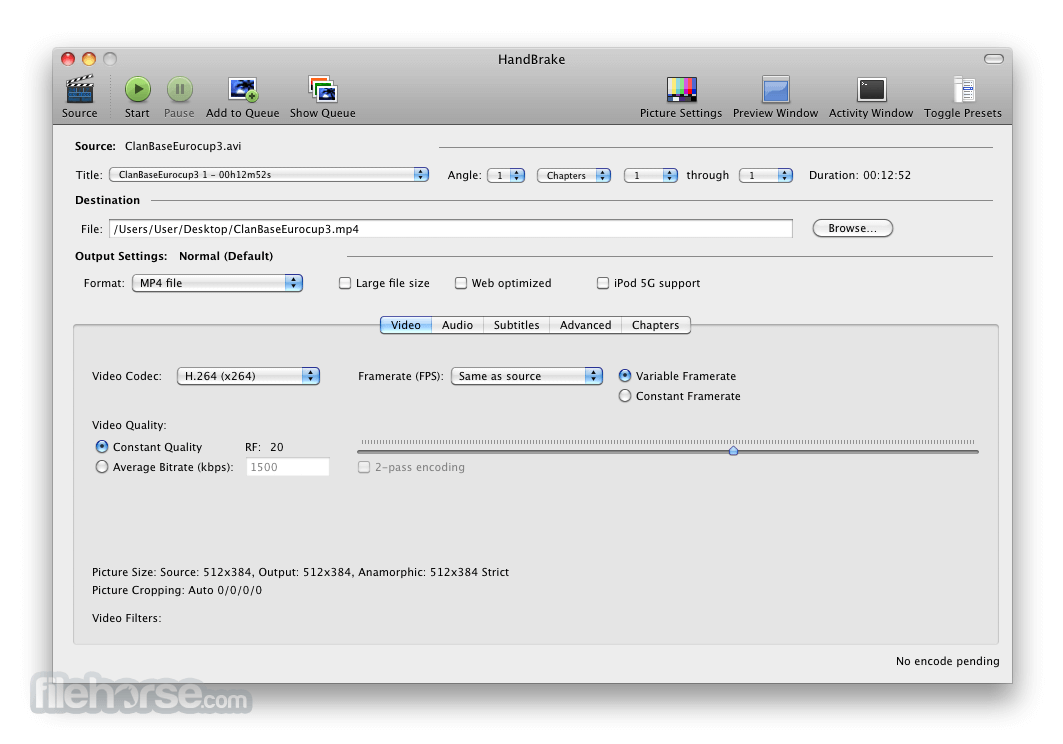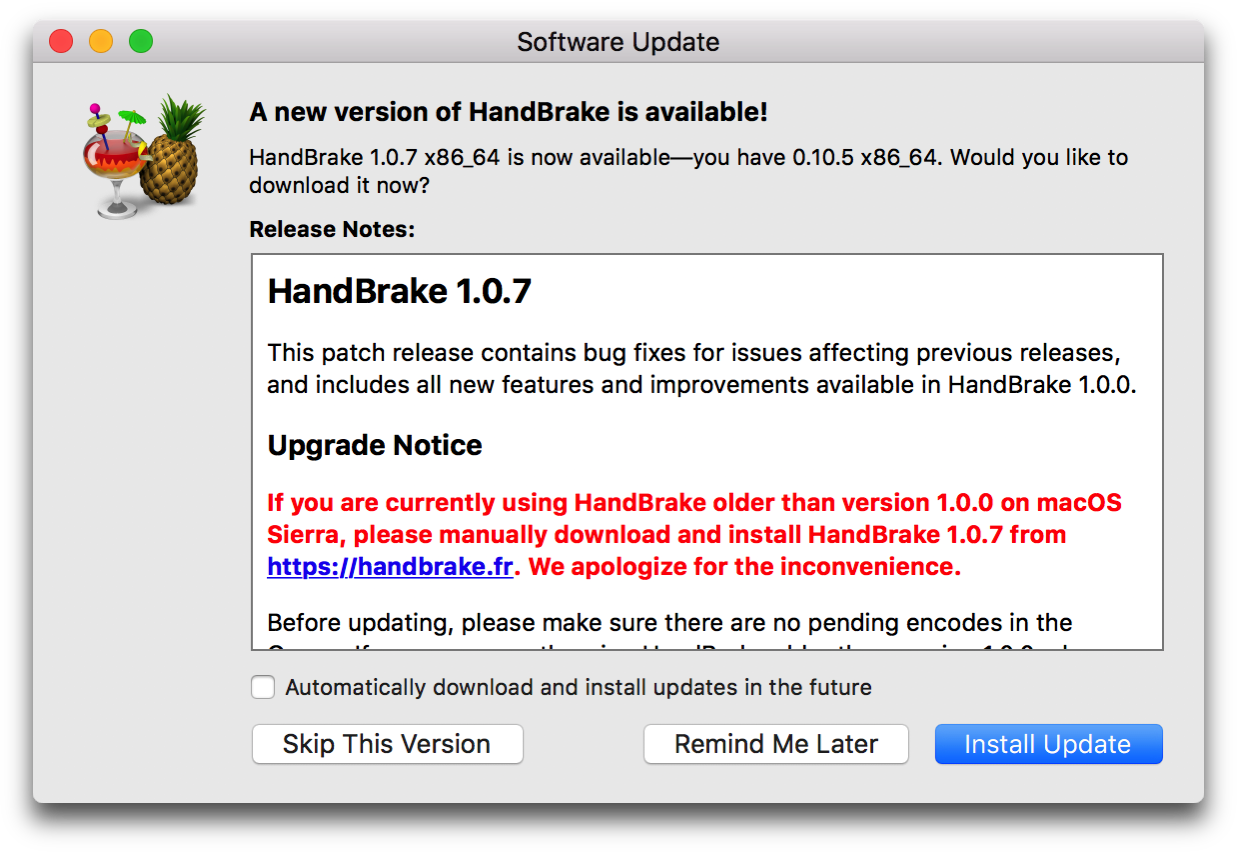

And because I don’t like doing repetitive tasks after 2 TV Shows I tried to find a way to batch convert them like that I wouldn’t have to click a bunch of time all around HandBrake to apply the same settings. Encoding TV Shows means at least 13 episodes per season and if the TV Shows has 5 seasons it’s a lot of videos to convert. Most of them were episodes from TV Shows I have in DVD that I want to watch on my AppleTV. Tags APFS Apple AppleScript Apple silicon backup Big Sur Blake bug Catalina Consolation Console diagnosis Disk Utility Doré El Capitan extended attributes Finder firmware Gatekeeper Gérôme HFS+ High Sierra history of painting iCloud Impressionism iOS landscape LockRattler log logs M1 Mac Mac history macOS macOS 10.12 macOS 10.13 macOS 10.14 macOS 10.These 2 past months I spent a lot of time converting videos with HandBrake. That’s not as convenient as holding the Shift key down on an Intel Mac, but neither do you have to remember all those arcane startup key combinations.

Remember that has changed on M1 Macs, which have to be shut down and started up in Recovery before the option of Safe mode is available. For that, starting up in Safe mode remains the only solution. What this doesn’t do, of course, is flush the caches and clean up any accumulated crud in your user account.

With a bit of luck your Mac should then be back in fine fettle again, ready for you to resume work with the minimum of disruption.
#HANDBRAKE MAC SHUTDOWN PASSWORD#
Because your Mac isn’t starting up from scratch, its Bluetooth remains working throughout, so there’s no frustrating delay before you can type your password in. Normally, this manoeuvre should only take a few seconds to complete. To refresh those a restart will be needed, another example where saving effort in macOS doesn’t help you maintain it. But if try that and check PIDs again, and glance at the CPU Time column, it’s apparent that many user and other late-loading processes retain low PIDs and long CPU times. Some of those user processes, and some of those with PIDs greater than loginwindow, should be shut down when you log out, then be started up again, as needed, when you log back in again. Processes with lower PIDs were all started before login, and those with higher PIDs were started afterwards. Not too far below it you should see the first user process, loginwindow, at around 166 that’s also the first process to be given its own icon at the start of the line. Find WindowServer in the list, and it’ll generally have a PID of around 152. As these PIDs are assigned in simple numerical order, they reveal the order of process startup. So how can you tell which processes could be refreshed by this manoeuvre? To find out, sort the list of processes in Activity Monitor by their Process Identifier or PID.Īt the top, with PID 0, you’ll see kernel_task, followed by launchd with a PID of 1.
#HANDBRAKE MAC SHUTDOWN MANUAL#
This means that, if you’re trying to slip a manual change to a preference file past cfprefsd, a full restart is likely to be required. You wouldn’t expect the root copy to be affected by logging out, but at least the user copy could have the decency to do so. When you suspect WindowServer problems, logging out and back in again is usually a first attempt, although in more recent versions of macOS, that may not help, and a complete restart may be the only way to address this.Ĭfprefsd is a particular nuisance here, as there are normally both root and user copies running to handle all those preferences.

However, in the recent past macOS itself has used user logout as a way to restart WindowServer without rebooting. Contrary to what you might expect, some user processes continue running uninterrupted even after you’ve logged out. This can sometimes fix problems with WindowServer, although it isn’t normally shut down when you log out, neither is the troublemaker cfprefsd. When you log out but don’t restart your Mac, many of those processes running as the current user should be shut down, and only started up again when you log back in. Those at the bottom of the list are running as root, and there are some with custom users such as _spotlight in the middle. You’ll see the majority of users are you, the user who’s currently logged in. View all processes in the CPU tab and sort them by the User column. Take a look in Activity Monitor to understand how this might work. But in many cases, neither of those is necessary, and it’s quicker and less disruptive to log out and log back in again. That’s not quite the same as shutting down, leaving your Mac a minute or two, then starting up, what’s often known as a cold boot. What happens next is that the Mac shuts down and immediately restarts, going through the full boot process. When something’s not working right on your Mac, one of the most common and effective solutions is to restart it.


 0 kommentar(er)
0 kommentar(er)
